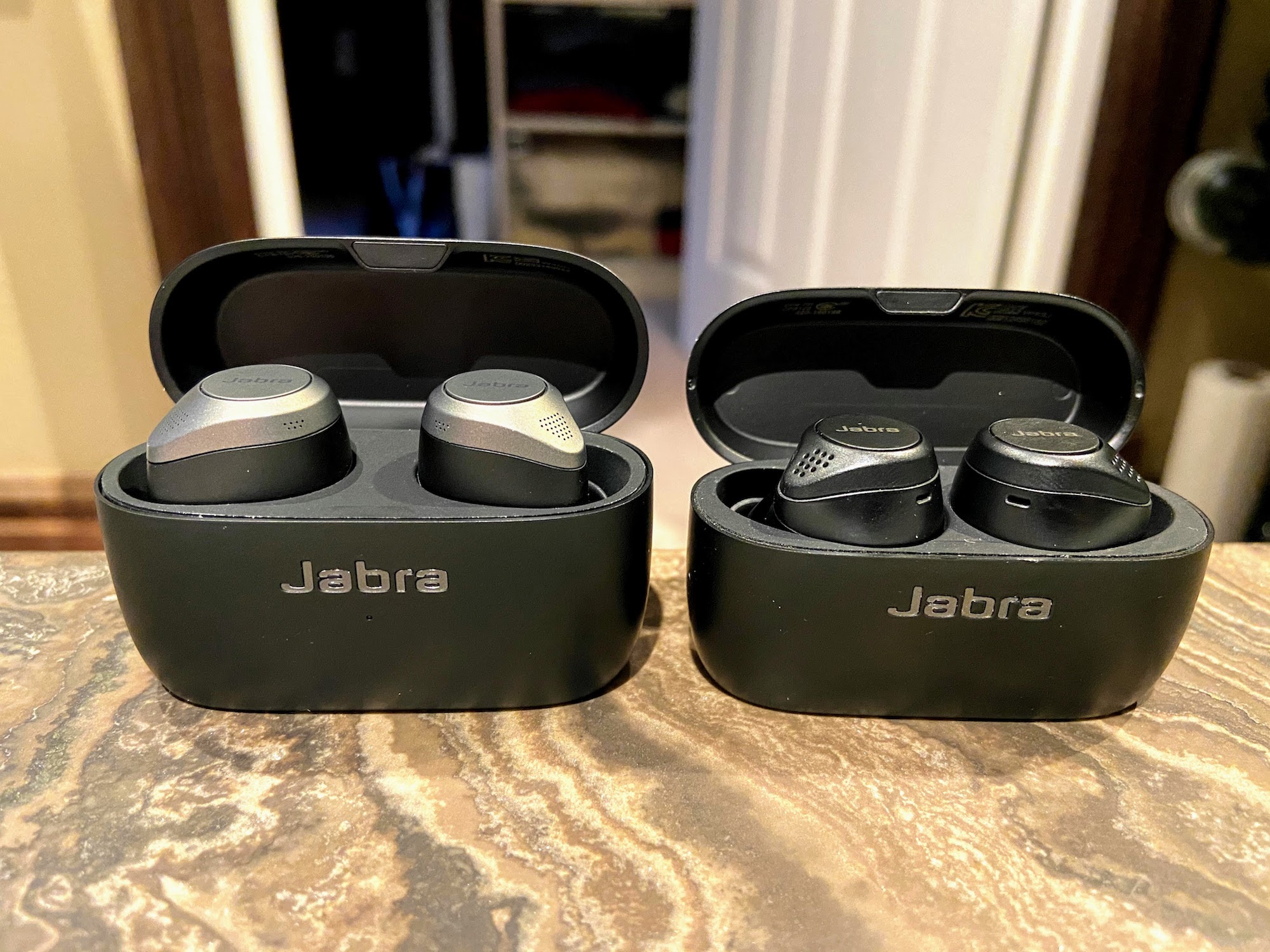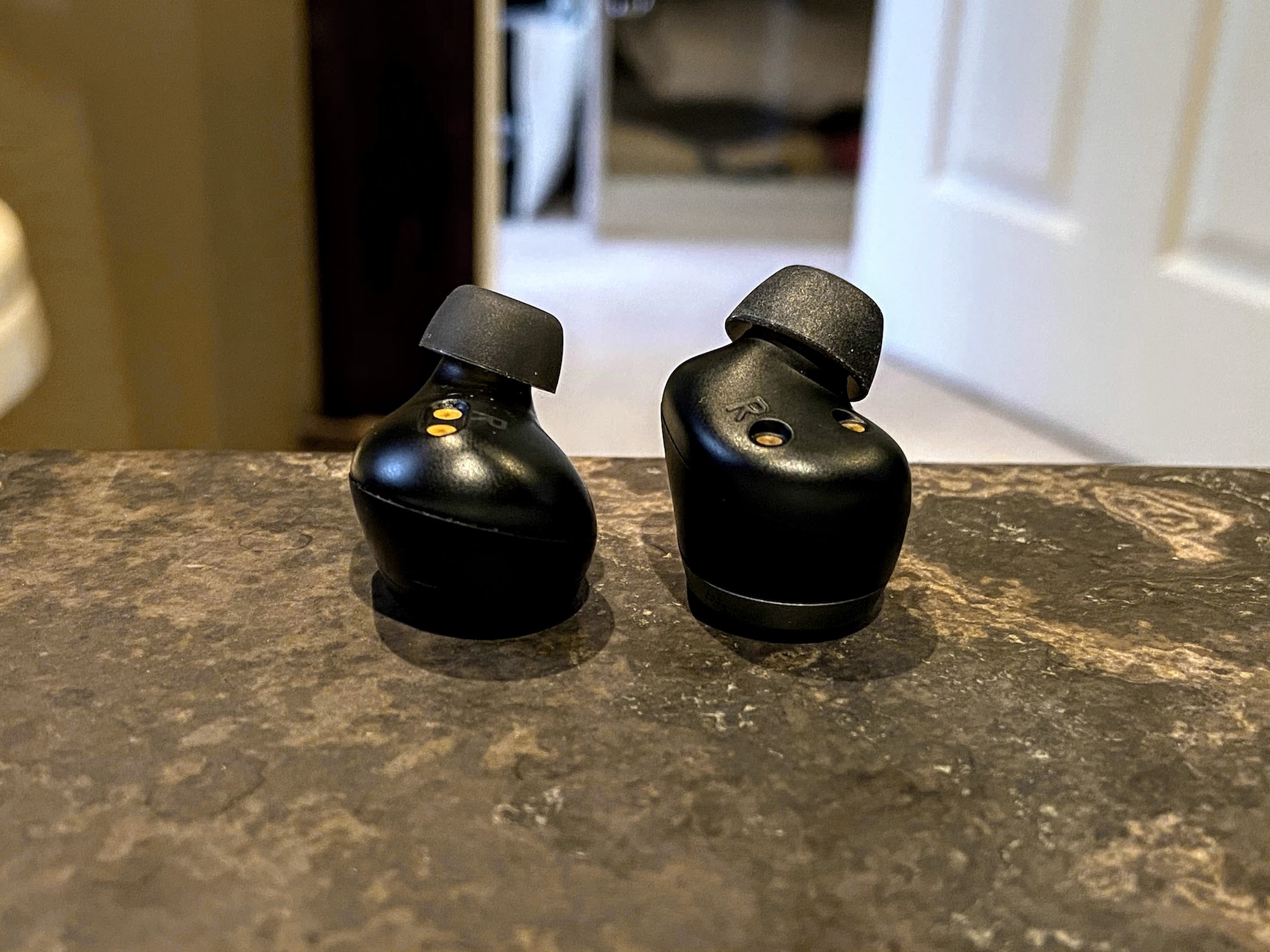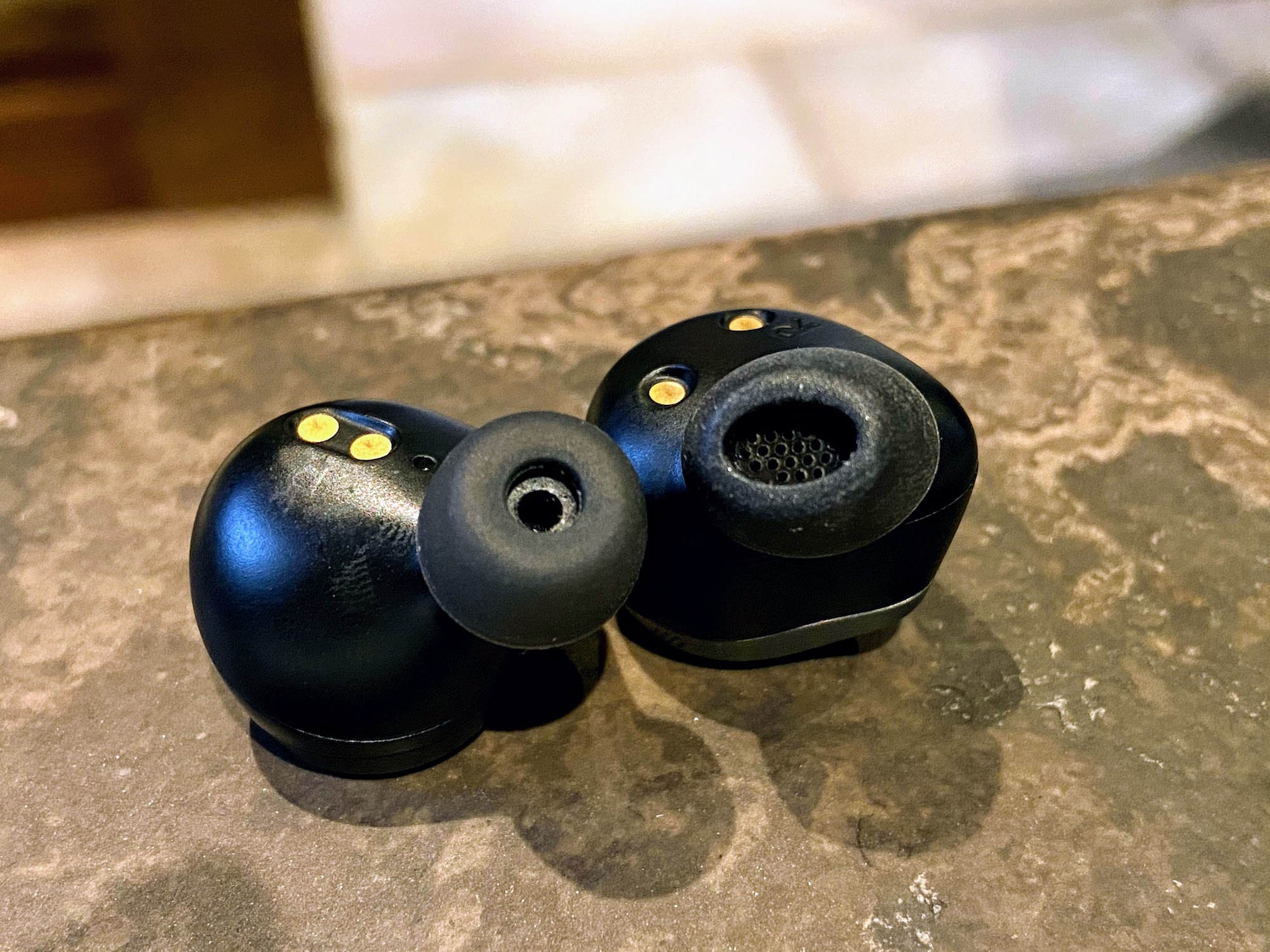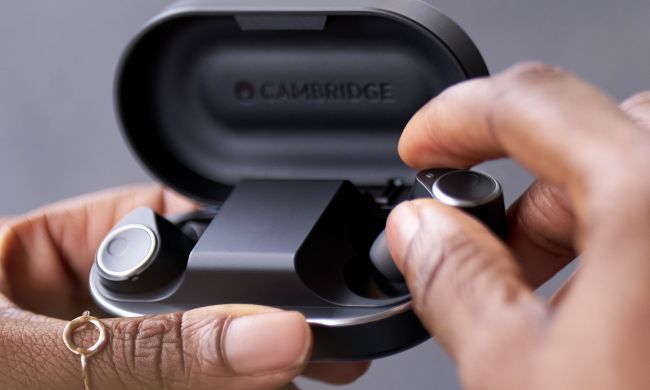- Very comfortable
- Excellent sound quality
- Excellent noise cancellation
- Customizable controls
- Excellent call quality
- Wireless charging
- Average battery life
- No aptX or LDAC
Jabra’s $180 Elite 75t and $200 Elite Active 75t are two of the best true wireless earbuds you can buy. They’re comfortable, they sound great, they have decent battery life, and they can resist a lot of water and dust. And as of October, they also have active noise cancellation (ANC).
Who could ask for anything more?
And yet, more is exactly the goal of the new $230 Jabra Elite 85t, which promise better sound and improved noise-canceling thanks to a new hybrid ANC system. They also aim to end occlusion — that feeling some people get when wearing in-ear earbuds that their ears are stuffed with cotton.
Lofty goals indeed. Did Jabra succeed? Let’s find out.
What’s in the box?
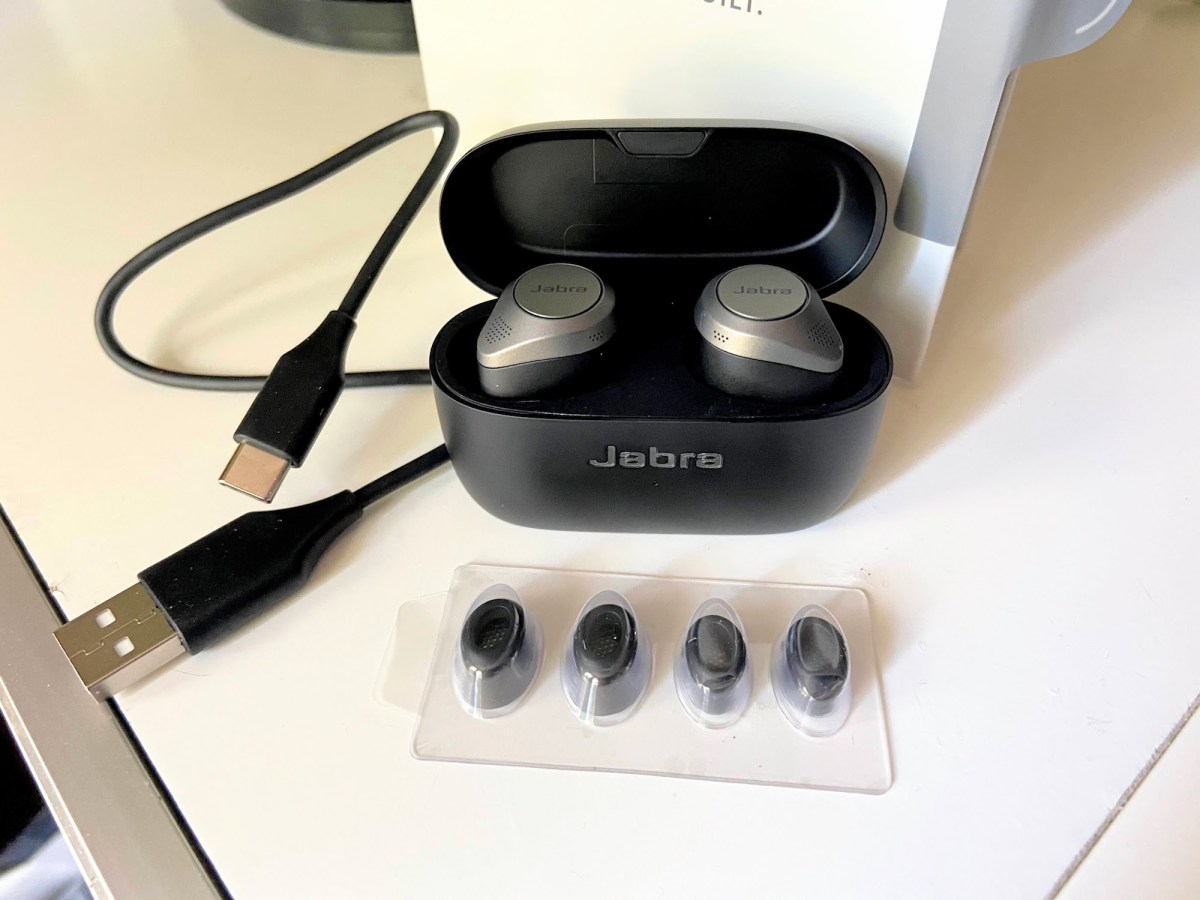
First, some praise for Jabra: The Elite 85t ship in a very small and fully recyclable box. A few tiny plastic adhesive labels remain, but for the most part, it’s an exceptionally environmentally friendly package.
Inside that box are the Elite 85t, already nestled in their charging case, a USB-C charging cable, two sets of silicone eartips, and a small safety and warranty printed pamphlet.
Design

Jabra knows that when something ain’t broke that you don’t fix it. So instead of reinventing the wheel, it took the highly successful design of the Elite 75t and simply scaled it up in order to fit some of the new technologies and features.
The charging case is as pocketable as ever, but it weighs slightly more now. That’s probably because Jabra had to find the room not only for the larger 85t earbuds but also for the wireless charging capability. It’s a handy feature that’s showing up on more and more true wireless earbuds at a range of prices, from $50 to $350, so it’s good to see Jabra hasn’t ignored it.
Little-known fact: You can actually buy the Elite 75t or Elite Active 75t with a wireless charging case, but only from Jabra.com.
The USB-C port for wired charging sits below the hinge on the back of the case, but Jabra has wisely decided to move the case’s LED indicator to the front, where it’s way easier to see.
Despite the added bulk, the earbuds are still amazingly compact. The same single physical button — which I think is the best control system you can find — also makes a return. Unfortunately, due to their semiopen design, Jabra wasn’t able to maintain the amazing IP55 and IP57 ratings of the Elite 75t and Elite Active 75t, respectively. The 85t are still IPX4, however, which is good enough for all but the wettest of situations, and it’s the same as the AirPods Pro.
Comfort, controls, and connections
The Elite 75t set a new standard for comfort and fit for true wireless earbuds. The 85t are every bit as comfortable, but their slightly larger shape means they don’t fit quite as securely. I’ve always been really happy at how deeply I can seat the 75t into my ear canals, thanks to their small body and tall tower, but the 85t sit a hair shallower.
The oval eartips feel great, but their asymmetrical shape prevents you from rotating the earbuds in your search for the best fit. Oval eartips can be hit or miss. They’re amazing on the AirPods Pro, but I found them to be a challenge on the 1More Air ANC.
Ear tip size selection thus plays an even greater role, and Jabra only provides three sizes in total. Mediums usually fit me the best, but I jumped up to the large to create a better seal.
Flipping back and forth between ANC and the ambient HearThrough modes can be done instantly.
A good seal is key to both sound quality and noise-canceling, so it’s somewhat surprising that Jabra didn’t provide an eartip fit test within the Sound+ app. These tests, which Apple and Amazon use for their earbuds, provide an extra level of assurance that you’ve got the right eartips for your ears.
The 85t use a semiopen design that lets a small amount of air travel between your inner ear and the outside world. Jabra says this improves comfort by eliminating the pressure buildup that can happen in fully closed designs like the Elite 75t. It’s also the reason why the 85t are larger than the 75t — semiopen designs require a bit more internal volume.
With air travel somewhat hard to come by at the moment, I couldn’t put that particular claim to the test. But what I can confirm is that the 85t feel a lot airier than the 75t, and they definitely reduce the feeling that you’ve got an object jammed in your ear.
As I said above, the controls are amazing. There’s a click combination for every conceivable function, including volume and voice assistant access. Flipping back and forth between ANC and the ambient HearThrough modes can be done instantly, with a single click. It’s a faster transition than any other ANC earbuds I’ve tried.
Not a fan of the way Jabra has assigned the controls? Simply jump into the Sound+ app and rearrange them to your liking.
My only minor gripe: On the Elite 75t, button presses take virtually no force and they happen no matter where you place your finger. The 85t, by contrast, use an offset switch — you need to press on the portion of the button that’s closest to the little triangular microphone bay to get it to click as effortlessly as the 75t.
Like the Elite 75t before them, the Elite 85t have wear sensors and can automatically pause and resume music when you remove or insert them. It’s accurate and incredibly fast.
Pairing the Elite 85t is a snap, but if you’re an iPhone user, do yourself a favor: Don’t try to pair them from within the Jabra Sound+ app as the box suggests. I’ve never found this technique to work. Instead, just pair them normally within the Bluetooth panel of the iOS settings app, and then open the Sound+ app.
Once paired, I was surprised to experience some truly terrible connection problems. The left earbud sounded like it was having an electrical short, and the right bud wasn’t much better. DT Senior Editor Caleb Denison experienced the same thing with his review unit. Curiously, though, it seems to be highly specific location-wise.
It only happened in my office, where I’m surrounded by wireless devices and metal cabinets, and even then, only sporadically. I’m fairly certain it won’t be an issue for most people, and I expect Jabra will release a firmware fix for it soon.
As with the Elite 75t and most of Jabra’s other wireless headphones, you can pair the 85t to two devices at once. It’s a huge convenience for those of us who bounce back and forth between computers and phones, but very few companies offer it (it’s called Bluetooth Multipoint). The closest thing you’ll find is Apple’s auto-switching feature on its AirPods — but it only works when transferring between two different Apple devices.
Sound quality

With the Elite 75t models, you have a choice of sound signatures. The normal 75t are huge on bass, while the Active model presents a much more neutral EQ. Both sound really good, but their soundstage is fairly narrow, creating a sound that is more “in your head” than outside of it.
The Elite 85t are simply some of the best-sounding true wireless earbuds you can buy right now.
The Elite 85t are much more expansive, and they possess greater detail, too. Across the EQ spectrum, they deliver more accuracy, which helps separate instruments from each other. A great example of this is Thomas Newman’s Dead Already from the American Beauty soundtrack. With the Elite 75t, the multiple layers of percussion are clear and full, but it’s not until you pop in the Elite 85t that you realize how tightly the 75t packs those layers. By contrast, the 85t open them right up, letting them occupy a much larger space. That extra space lets you really appreciate Newman’s choices in the studio and the textures those choices created.
By default, the 85t have a relatively neutral EQ. You can pump up the bass within the Sound+ app for a more thunderous low-end, or boost the highs for increased vocal clarity, but I didn’t find the need to do either.
Our benchmark for overall true wireless performance is the Sony WF-1000XM3. I spent a lot of time bouncing back and forth between those earbuds, the AirPods Pro, and the 85t. The Elite 85t are, from an acoustic perspective, incredibly close to the Sony XM3, and I think they beat out the AirPods Pro when it comes to warmth and resonance. In other words, the Elite 85t are simply some of the best-sounding true wireless earbuds you can buy right now.
The only thing that could have improved the 85t’s sound would be the addition of higher-quality Bluetooth codecs like aptX, aptX HD, or LDAC.
Noise cancellation
ANC on the Elite 85t is superb.
Now that both the Elite 75t and Elite Active 75t have ANC, thanks to a recent firmware update, you might be wondering if it’s worth spending the extra money for the 85t. In a word: Yes.
ANC on the Elite 85t is superb. It uses a hybrid system with feedforward and feedback mics (as opposed to the 75t models, which only have feedforward mics). You can dial in the exact amount of noise cancellation you want via the Sound+ app and, when set to maximum, it’s every bit as effective as the AirPods Pro and better than the WF-1000XM3.
But what sets the Elite 85t apart is their utter lack of any kind of floor hiss. Usually, if you listen carefully when there’s no music playing, you can detect a low-level hissing sound when using ANC. It’s detectable on the WF-1000XM3, and even a little on the AirPods Pro, but the 85t are dead silent.
It also bears repeating just how fast and easy it is to switch between ANC and HearThrough modes — it’s almost instantaneous. The AirPods Pro require a press and hold to switch, while the XM3 force you to cycle between ANC on, ANC off, and ambient modes.
Battery life

Just about the only area that hasn’t improved greatly on the Elite 85t is battery life. It’s essentially unchanged from the Elite 75t: You get about seven hours of operation with ANC off and 5.5 hours with ANC on. If you want to be picky, that’s actually 30 minutes less runtime than the 75t when ANC is off.
Quick charging is also unchanged, with a 15-minute charge boosting play time by just one hour.
By today’s standards, these stats aren’t much to write home about, but when you factor in the charging case’s capacity, you can still get a full day out of these buds (19.5 hours with ANC on, 24 hours with ANC off). And, to be fair, to get considerably more battery life from a set of true wireless earbuds with ANC and top-notch sound, you’ll have to spend considerably more money.
Call quality
Jabra has always enjoyed a reputation for making Bluetooth headsets with great call quality, and the Elite 85t maintain that credibility. Calls were crystal clear and only the loudest traffic or construction sounds were able to compete with my voice.
The HearThrough mode (known as sidetone when used on phone calls) kept my voice sounding completely natural on my end of the conversation, which is really important for longer calls as it reduces fatigue.
Our take
With the Elite 85t, Jabra has taken its tried-and-true wireless earbud formula and made some big improvements. The result is a top-notch set of noise-canceling earbuds with premium sound quality and features that make them ideal companions for work, play, or travel.
Is there a better alternative?
At this price, I don’t think there is. Sony’s WF-1000XM3 offer slightly better battery life, but are way bigger and bulkier and don’t have wireless charging.
While iPhone users may prefer the AirPods Pro simply because of their tight integration with Apple’s ecosystem and their hands-free Siri access, I think the Elite 85t sound better and they cost less.
How long will they last?
Jabra’s products are very well-built and the Elite 85t appear to be no exception. With only IPX4 protection, they won’t stand up to as much water or dust exposure as the 75t series, but Jabra still backs them with a two-year warranty in case anything happens. I suspect the 85t will last for many years if used with care.
Should you buy them?
Yes. The Elite 85t will satisfy your need for comfort, quiet, and sound quality, for less money than its closest competitors.


